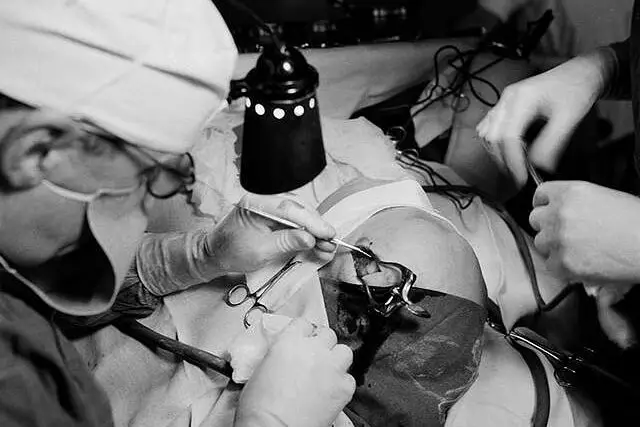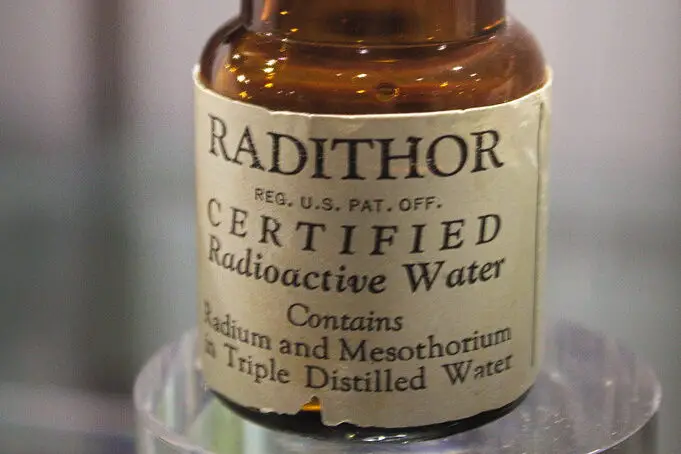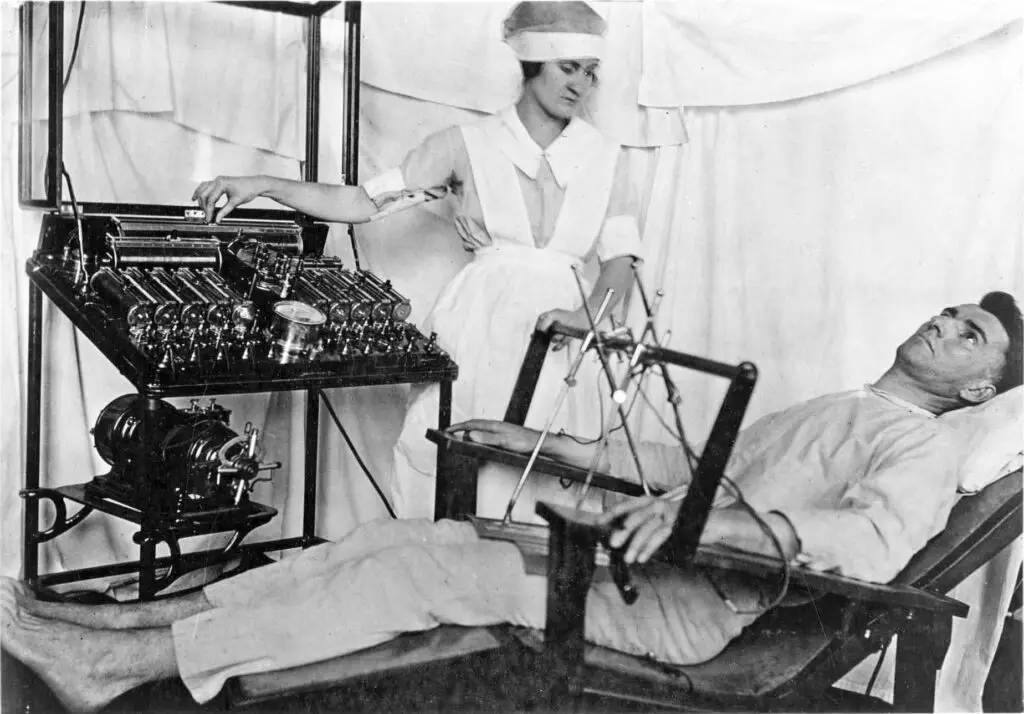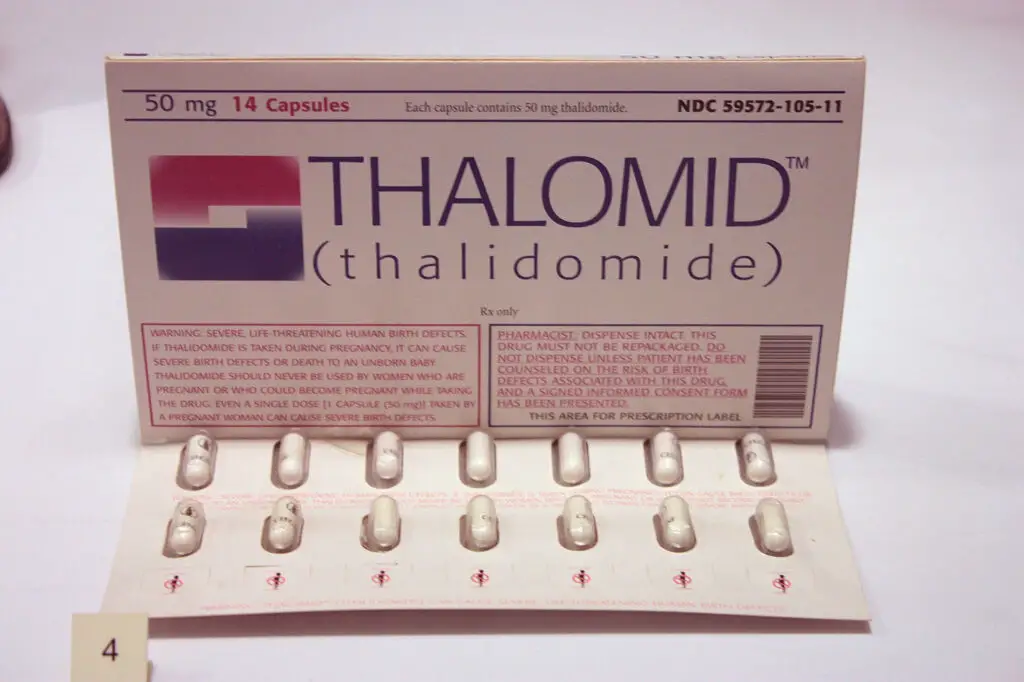1. Lobotomies: The ‘Cure’ for Mental Illness

Lobotomies were once considered a miracle treatment for mental health issues, particularly for conditions like schizophrenia, depression, and even anxiety. The procedure involved severing connections in the brain’s prefrontal cortex, often leading to significant personality changes or a vegetative state. In the mid-20th century, doctors believed that disrupting brain function could relieve patients of their mental health symptoms, but many patients ended up in worse conditions than before.
Despite the procedure’s gruesome nature, lobotomies were widely practiced from the 1940s into the 1960s. It wasn’t until the development of antipsychotic medications and the growing ethical concerns over patient consent that the practice was abandoned. While lobotomies are mostly remembered as a dark chapter in medical history, they show just how far the field of psychiatry has come in terms of both knowledge and ethics.
2. The Use of Radium for Health Benefits

In the early 20th century, radium was seen as a miracle substance with the ability to cure ailments ranging from arthritis to cancer. It was even added to drinking water, toothpaste, and cosmetics in the belief that it had healing powers. People flocked to “radium spas,” where they could bathe in radium-infused water, or use radium-coated gadgets to “cure” various illnesses.
Sadly, the truth behind radium’s supposed healing powers was far more sinister. Over time, the radioactive substance was found to cause severe health issues, including radiation poisoning and cancer. The famous case of the “Radium Girls” – factory workers who suffered from radiation poisoning after painting glow-in-the-dark watch dials with radium – brought attention to the dangers of radium. It wasn’t until the mid-20th century that the dangers of radium were fully recognized.
3. Electroconvulsive Therapy (ECT)

Electroconvulsive therapy, or ECT, is still used today, but its early history was terrifying. In the 20th century, ECT was widely used to treat various mental health conditions, including depression, by sending electrical currents through the brain. The procedure was often done without anesthesia or muscle relaxants, leading to patients experiencing intense seizures and broken bones from the violent convulsions.
While modern ECT is much more controlled and is performed under anesthesia, its early use often led to physical and psychological trauma. For years, ECT was considered a last resort for individuals with severe mental illness, but it was used too often as a quick fix without full consideration of its risks. Today, it’s used cautiously and effectively, but its history is a chilling reminder of how far medicine can sometimes go in the name of “treatment.”
4. The Thalidomide Disaster

Thalidomide was marketed in the 1950s and early ’60s as a mild sleeping pill and an anti-nausea treatment for pregnant women. It quickly became a popular drug, prescribed to many women suffering from morning sickness. Tragically, thalidomide caused thousands of babies to be born with severe birth defects, including missing or deformed limbs.
The drug was eventually pulled from the market, but not before it caused irreparable harm to countless families. The thalidomide disaster led to stricter regulations on drug testing and approval, as well as greater awareness of the potential risks of medications. While thalidomide is still used today in specific circumstances to treat conditions like leprosy and multiple myeloma, its early history remains a haunting example of the dangers of insufficient testing and oversight.
5. Bloodletting: An Ancient Practice That Lingered

Though bloodletting has roots in ancient medicine, it was still practiced well into the 20th century. This “treatment” involved draining blood from a patient, usually to “balance the humors” or remove toxins from the body. While the practice was slowly fading out by the early 1900s, it remained a common treatment for a variety of ailments, including fever, headache, and even high blood pressure.
Incredibly, some doctors continued to recommend bloodletting even after its ineffectiveness was widely known. In fact, it wasn’t until the late 19th century that modern science and more advanced medical practices put an end to the practice. Despite its decline, bloodletting remained a disturbing symbol of how medical traditions could persist for centuries without solid scientific backing.
6. The Use of Mercury in Medicine

Mercury, a toxic substance, was once commonly used in medicine to treat everything from syphilis to teething pain. In the 19th and early 20th centuries, mercury-containing compounds were used in ointments, medications, and even as a diuretic. It was also used to treat common ailments like constipation, despite the fact that mercury poisoning was a well-known risk.
Over time, doctors began to realize the dangers of mercury exposure, but its use in medicine persisted until well into the 20th century. Mercury poisoning can cause serious health problems, including neurological damage, kidney failure, and even death. Today, mercury is rarely used in medicine, but it still appears in some older vaccines and dental fillings, raising ongoing concerns about its long-term effects.
7. The Enema Craze

In the early 20th century, enemas were touted as a cure for almost anything—from constipation to mental illness. Doctors and alternative medicine practitioners frequently recommended regular enemas as a way to “cleanse” the body. The practice even extended to the use of highly questionable substances, like coffee and soap, as part of the enema solutions, which could cause more harm than good.
The belief in the “detoxifying” powers of enemas became a widespread phenomenon, with many people swearing by the procedure for improving health and prolonging life. It wasn’t until later in the 20th century that medical professionals realized the risks of frequent enemas, including bowel perforations, electrolyte imbalances, and even addiction. While enemas are still used today for specific medical conditions, the widespread belief in their healing powers is thankfully a thing of the past.
